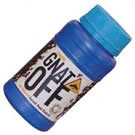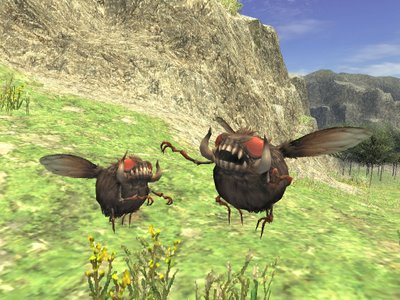 As I write this there is a tiny gnat flitting about my screen desperately trying to find a way into the world of light. This has happened almost every night for the past several weeks. It’s not the same gnat mind you because each evening I eventually get tired of the little guy and smoosh him somewhere against my 17 inch monitor.
As I write this there is a tiny gnat flitting about my screen desperately trying to find a way into the world of light. This has happened almost every night for the past several weeks. It’s not the same gnat mind you because each evening I eventually get tired of the little guy and smoosh him somewhere against my 17 inch monitor.
It seems to be a banner year for flies and gnats as we have been getting many calls for these bothersome pests from a variety of areas and with all kinds of different environments. Established customers who rarely see a bug now have little dive bombers all over the cat food or around their  dinner table. New clients that are at their wits end call for some sort of relief from these persistent flyers that twit about their nose and mouth. High end homes as well as some that aren’t kept up so well share in the torture that these winged terrorists engage in. Even my local chemical distributor is plagued with the pesky critter and that would be the last place I would expect to see them.
dinner table. New clients that are at their wits end call for some sort of relief from these persistent flyers that twit about their nose and mouth. High end homes as well as some that aren’t kept up so well share in the torture that these winged terrorists engage in. Even my local chemical distributor is plagued with the pesky critter and that would be the last place I would expect to see them.
One key to flying pests and their control is identification, if you know what it is you’ll know what to do. Fruit flies can be dealt with by constructing a simple trap and then finding the source. ID Drain flies and you know you need to look at your plumbing areas or septic system. But what do you do if you can’t identify them? I’ll admit I have no idea what kind of gnat visits my screen every night. To id it after I’ve creamed him all over my Google search bar icon would take some sort of forensic science equipment and a team of entomologists I’m sure.
One thing that is common with all pest invasions whether it’s roaches, earwigs, mice or gnats is a common denominator. These bugs or vermin didn’t just fly across town and end up in my office by chance. Something has either brought them here or was neglected long enough to allow them to build up in numbers so that now they are intruding on the inside of my home.
Professional exterminators are always on the lookout for common denominators whether they realize it or not. If out of the blue one of my clients develops German roaches I always ask if they have gone to a yard sale or flea market and bought anything lately. Oddly, 99% of the time they say no quicker than Google can retrieve all the information it has on gnats. Results 1 – 10 of about 1,280,000 for Gnats [definition]. (0.14 seconds). That’s pretty quick but I don’t give up because I know they weren’t there last service and so as I look around I may see a new dresser drawer or find out the daughter has just moved home from college or any number of things. The customer then has a light bulb click on over their heads and we investigate further. Most times that common denominator yields the answer and I can make short work of the cure.
For gnats and flying pests it isn’t always so obvious but the principle is still the same. Find the source and you can deal with the problem. Here’s a list of things you can check assuming you can’t identify your pest and with any luck you may end the silent attackers torturous ways inside your home.
- Indoor plants, especially over watered ones or new ones delivered (like flowers)
New mulch or really old matted wet mulch just outside your windows and doors
Drains and sump pumps
Refrigerator condescension trays
Old forgotten sacks of potato’s or fruit
Trash cans that have build up of scrap and food particles
Under sinks for leaks
Dead mice under stoves or furniture
Dead mice, rats or birds in attic or crawl (even in garage behind storage)
Kitty litter boxes or pans
Mops
Recycle bins or boxes (drink cans are notorious)
Any new articles or furniture that has come into the home
Water damaged walls such as in bathrooms
Bath trap areas (you may need to cut one to access void under bathtub)
This is only a partial list but it covers what I initially look at when trying to solve a gnat problem. You most likely need to think outside the box and not limit these pests to what you think they need to survive. I’ve seen hoards of sewer flies (drain flies) come out of one small drain or crack in the floor. Fruit flies don’t need a whole banana to create generations of offspring but can get along just fine on just a small piece that fell in between the stove and fridge.
To eliminate the gnat once you’ve narrowed down the possibilities can be frustrating but chemical control is most likely not needed when you truly find the mother ship. Do your best to alter the source which usually involves cleaning, scrubbing and throwing the infected item away. Drains may need the grate or screen removed so you can get to the scum build up that is usually right there at the top. Mulch may need to be turned and allowed to dry out and screens may need to be refitted or shored up (some gnats are so small that screens are no obstacle). Not watering plants so much or setting them outside. Opening water damaged walls to allow drying or complete bleach cleaning of kitty litter boxes may be what are needed to cut off your source. Regardless you need to find source and you’ll be well on your way to gnat free living.
Now if you’ll excuse me, I have a gnat of my own to smoosh!




